At 13:02 on July 12, 2025 (Paris time), i.e. 18:02 on July 12, 2025 (Vietnam time), at the 47th Session of the World Heritage Committee (under UNESCO) taking place from July 6 to 16, 2025 in Paris, France, Professor Nikolay Nenov (Bulgaria) - Chairman of the Session officially gave the hammer to recognize the Complex of Monuments and Landscapes of Yen Tu - Vinh Nghiem, Con Son, Kiep Bac (located in the provinces of Quang Ninh, Bac Ninh and Hai Phong city) as a World Cultural Heritage.

The Yen Tu - Vinh Nghiem, Con Son, and Kiep Bac relic and landscape complex was recognized by UNESCO as a world heritage site. (Photo: Department of Cultural Heritage)
This is the 9th World Heritage Site in Vietnam recognized by UNESCO and the 2nd inter-provincial World Heritage Site in Vietnam, along with the World Heritage Site of Ha Long Bay - Cat Ba Archipelago (in Quang Ninh province and Hai Phong city).
The Complex of Monuments and Landscapes of Yen Tu - Vinh Nghiem, Con Son, Kiep Bac, with Truc Lam Buddhism as its core, was founded in the 13th century by the Tran Dynasty kings, especially the role of Buddhist King Tran Nhan Tong. Truc Lam Buddhism has created many values, making special and sustainable contributions to the cultural and spiritual heritage of humanity. Originating from the sacred Yen Tu mountain landscape, Truc Lam Buddhism represents a philosophical system and the spirit of tolerance and altruism of Buddhism. Truc Lam Buddhism is also a testament to the harmonious combination of Mahayana Buddhism with Confucian ethics, Taoist cosmology and indigenous beliefs of Vietnam. The ideological and cultural values of Truc Lam Buddhism are completely consistent with UNESCO's basic goals in maintaining and enriching the common values of humanity: Education, building a culture of peace ; spirit of autonomy, harmonious combination between humans and the natural world, respecting the laws of nature.

Hue Quang Tower Garden looking south. (Source: World Heritage nomination dossier)
Through temples, hermitages, pilgrimage routes, stone steles, woodblocks and carefully preserved relics distributed over a large space from Yen Tu to Vinh Nghiem and Con Son - Kiep Bac, the heritage fully reflects the development stages of Truc Lam Buddhism: From its establishment and institutionalization to its revival and continued spread of creative and humanistic values. These relic sites, formed many centuries ago, always demonstrate continued development, playing the role of religious and spiritual cultural centers, and pilgrimage destinations for millions of tourists each year.
The relic and scenic complex of Yen Tu - Vinh Nghiem, Con Son, Kiep Bac is a special testament to Truc Lam Buddhism, a unique Zen tradition of Vietnam founded in the 13th century by Tran kings, royal family and wise monks, especially Buddhist Emperor Tran Nhan Tong, the only known monarch in Asia who gave up the throne to become a monk, founding a Zen sect imbued with the philosophy of life and Vietnamese character.

Con Son Pagoda (Source: World Heritage nomination dossier)
Integrating Mahayana Buddhism with Confucianism, Taoism and indigenous beliefs, Truc Lam Buddhism has contributed to forming the spiritual foundation of Dai Viet nation, creating the driving force for the rise of an autonomous, self-reliant nation, while promoting cultural dialogue and the spirit of peaceful friendship among nations. For centuries, the Yen Tu - Vinh Nghiem, Con Son, Kiep Bac relic and scenic complex has always been a place with an important role in practicing, transmitting, spreading and creating culture. The spirit of tolerance and creativity of Truc Lam Buddhism has inspired and brought humanistic values to the domestic and international communities.
The Yen Tu - Vinh Nghiem, Con Son, Kiep Bac relic and scenic complex is directly related to the birth and spread of the creative and humanistic values of Truc Lam Buddhism. The continuous organization of rituals, festivals, propagation of Buddhism and pilgrimages to relic sites - both in Vietnam and international Truc Lam Buddhist organizations - proves the sustainable global relevance of the philosophy of life, life values, social community spirit, living in harmony with nature, love of peace and compassion.

Thai Lang in the middle of Trai Loc Lake (Source: World Heritage nomination dossier)
The Yen Tu - Vinh Nghiem, Con Son, Kiep Bac relic and scenic complex fully represents the Truc Lam Buddhist tradition, from its establishment in the sacred mountain of Yen Tu Mountain as evidenced by ancient temples and archaeological sites, to the Vinh Nghiem Pagoda and Con Son - Kiep Bac relic site; and the systematization of philosophies expressed through steles, related relics and ritual practices. These relics provide a full representation of the historical, spiritual and geographical dimensions of Truc Lam Zen Buddhism, clearly demonstrating the process of formation, development, and the sustainable relationship of tangible and intangible cultural values and documentary heritage in historical and cultural spaces.
The Yen Tu - Vinh Nghiem, Con Son, Kiep Bac relic and landscape complex includes a system of relics belonging to special national relics that have been ranked by the Prime Minister (including: Yen Tu relic and landscape complex, Tran Dynasty relic site in Dong Trieu, Vinh Nghiem Pagoda, Bo Da Pagoda, Con Son - Kiep Bac relic site, An Phu - Kinh Chu - Nham Duong historical and scenic relics), national relics that have been ranked by the Ministry of Culture, Sports and Tourism (Thanh Mai Pagoda...) and relics, antiquities, national treasures, intangible cultural heritage, traditional festivals in the area... along with the landscape with the mountain system and cultural space of Yen Tu - Vinh Nghiem - Con Son, Kiep Bac will be protected long-term, sustainably and promote their values in accordance with the provisions of the Law on Cultural Heritage and the 1972 UNESCO Convention on the Protection of World Cultural and Natural Heritage.
Ms. Nguyen Thi Hanh - Vice Chairwoman of the People's Committee of Quang Ninh province, Deputy of the Steering Committee - Head of the Executive Committee for the construction of the dossier of Yen Tu - Vinh Nghiem, Con Son, Kiep Bac said: The dossier has been carefully and methodically built by Quang Ninh province with high quality. After many years of efforts, the Heritage has been officially recognized internationally. Quang Ninh province will continue to build and implement the project to preserve, restore and promote the value of the Heritage, to ensure sustainability and widely spread the noble value of the World Heritage. The moment of being recognized is a great pride not only for the authorities and people of the three localities of Quang Ninh, Bac Ninh, Hai Phong, but also for the people of the whole country. The complex of relics and landscapes of Yen Tu - Vinh Nghiem - Con Son, Kiep Bac is the first chain-type World Heritage, and the second inter-provincial Heritage among the 9 World Heritages of Vietnam recognized by UNESCO.

ICOMOS and Vietnamese expert delegation on field trip to Yen Tu - Vinh Nghiem - Con Son, Kiep Bac relic and landscape complex (Source: Quang Ninh Province)
Permanent Deputy Minister of Foreign Affairs Nguyen Minh Vu, Chairman of the Vietnam National Commission for UNESCO, said: This recognition affirms the international appreciation of the value of the Complex of Monuments and the beautiful humanistic and peaceful thoughts of Truc Lam Buddhism founded by King Tran Nhan Tong, as well as Vietnam's efforts in heritage protection. UNESCO's recognition contributes to enhancing the country's position in the international arena, while creating favorable conditions for preserving and promoting heritage values in a sustainable manner. The Complex of Monuments' inscription also helps strengthen regional connectivity between Quang Ninh, Hai Phong, and Bac Ninh, building a unified heritage space, contributing to promoting the image of the country and people of Vietnam. At the same time, this is also another contribution of Vietnam to the goal of preserving and promoting heritage values that UNESCO is promoting. Honor and pride always go hand in hand with responsibility, requiring all levels, sectors and localities to raise awareness and synchronously deploy practical and effective measures to preserve and promote the value of heritage in accordance with the spirit of the World Heritage Convention associated with sustainable development.

Experts from various countries congratulate the Vietnamese delegation. (Photo: Department of Cultural Heritage)
In his response speech, Deputy Minister of Culture, Sports and Tourism, Dr. Architect Hoang Dao Cuong emphasized that to achieve this success, for many years now, the system of relics and intangible cultural heritages of localities has received special attention from the Ministry of Culture, Sports and Tourism and the provinces through the implementation of many projects to preserve and restore relic works; research, identify values to prepare nomination and registration dossiers domestically and internationally; contribute to protecting the outstanding global value of heritage sites, improving the cultural and spiritual life of the local community and people. At the same time, we are pleased to inform the Session that Vietnam will continue to implement activities to protect and promote the values of World Heritage in a sustainable manner, implementing a model of good management of World Heritage in Vietnam. This spirit has been demonstrated by the fact that on November 23, 2024, the National Assembly of the Socialist Republic of Vietnam passed the Law on Cultural Heritage 2024, along with documents guiding its implementation (including the internalization of UNESCO's sustainable development perspectives in the spirit of the World Heritage Convention, providing regulations on heritage impact assessment in the context of World Heritage, developing a World Heritage Management and Protection Plan; linking the conservation of relics with the protection of intangible cultural heritage at World Heritage sites, with the goal of serving local communities better and better...).

Vietnamese delegation attends the 47th Session
According to Associate Professor, Dr. Le Thi Thu Hien - Director of the Department of Cultural Heritage, Standing Member of the National Cultural Heritage Council, Head of the Vietnamese expert group participating in the World Heritage Committee, said: The Yen Tu - Vinh Nghiem, Con Son, Kiep Bac relic and landscape complex being inscribed by UNESCO into the World Heritage List is the result of closely following and implementing the direction of the Party and State leaders. This result demonstrates the great efforts and determination of the localities of Quang Ninh, Hai Phong, Bac Ninh, especially the leading role of the People's Committee of Quang Ninh province throughout the research process starting from 2013 to register with UNESCO to include in the List of Tentative dossiers for nomination with clusters and sites of relics in Quang Ninh province and Bac Giang province (now Bac Ninh province) until 2020, assigned by the Prime Minister to add relics in Hai Duong province (now Hai Phong city) to ensure the integrity of the heritage; determined to strengthen research work, complete the dossier to request UNESCO to recognize it as a World Heritage Site; that journey has been fraught with many difficulties and challenges, including the recommendation to "return the dossier" right before the Session. However, that helps us affirm that, for more than 10 years, the Vietnamese Government has paid special attention to and promoted research work at the heritage site until today's success.
The World Heritages in Vietnam recognized by UNESCO have been making important contributions to the local socio-economic development, environmental protection, green and sustainable growth, and thereby promoting Vietnamese culture, country and people to the world and enriching the world's cultural treasure.
This contribution also demonstrates Vietnam's commitment and responsibility in protecting World Heritage sites not only in Vietnam but also in the Southeast Asian region, preserving them for the present and passing them on to future generations. Vietnam, as a member of the World Heritage Committee for the 2023-2027 term, is also making a more active contribution to the implementation of the World Heritage Convention./.
Source: https://vov2.vov.vn/van-hoa-giai-tri/viet-nam-co-di-san-the-gioi-thu-9-duoc-unesco-cong-nhan-54018.vov2







![[Photo] Prime Minister Pham Minh Chinh launched a peak emulation campaign to achieve achievements in celebration of the 14th National Party Congress](https://vphoto.vietnam.vn/thumb/1200x675/vietnam/resource/IMAGE/2025/10/5/8869ec5cdbc740f58fbf2ae73f065076)

















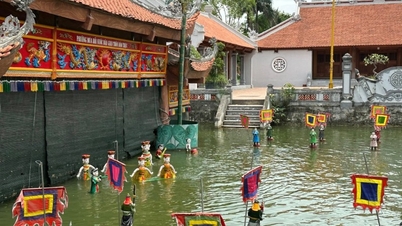








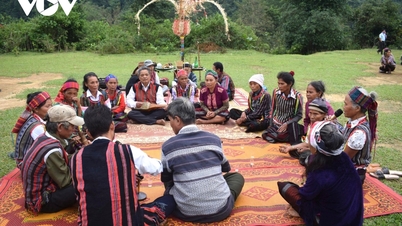



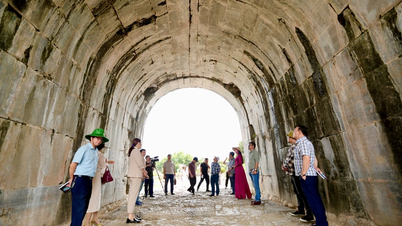

![[Photo] Bustling Mid-Autumn Festival at the Museum of Ethnology](https://vphoto.vietnam.vn/thumb/1200x675/vietnam/resource/IMAGE/2025/10/4/da8d5927734d4ca58e3eced14bc435a3)













![[VIDEO] Summary of Petrovietnam's 50th Anniversary Ceremony](https://vphoto.vietnam.vn/thumb/402x226/vietnam/resource/IMAGE/2025/10/4/abe133bdb8114793a16d4fe3e5bd0f12)

![[VIDEO] GENERAL SECRETARY TO LAM AWARDS PETROVIETNAM 8 GOLDEN WORDS: "PIONEER - EXCELLENT - SUSTAINABLE - GLOBAL"](https://vphoto.vietnam.vn/thumb/402x226/vietnam/resource/IMAGE/2025/7/23/c2fdb48863e846cfa9fb8e6ea9cf44e7)














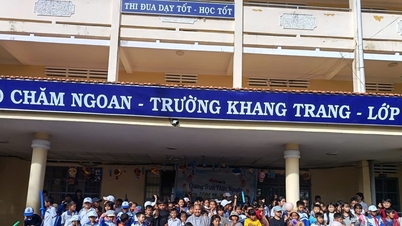

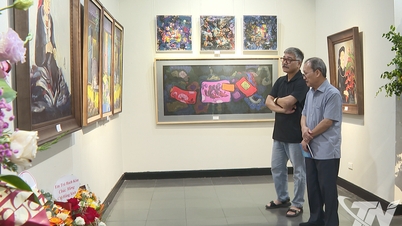

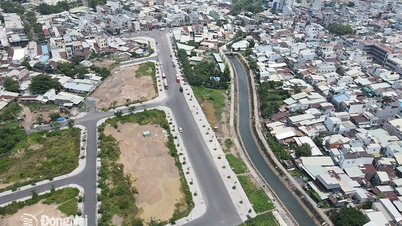

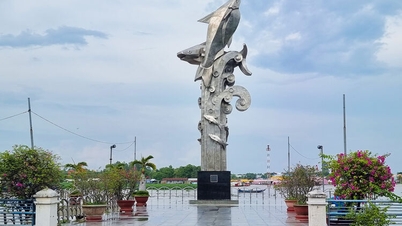



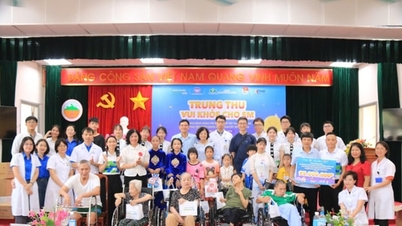












Comment (0)